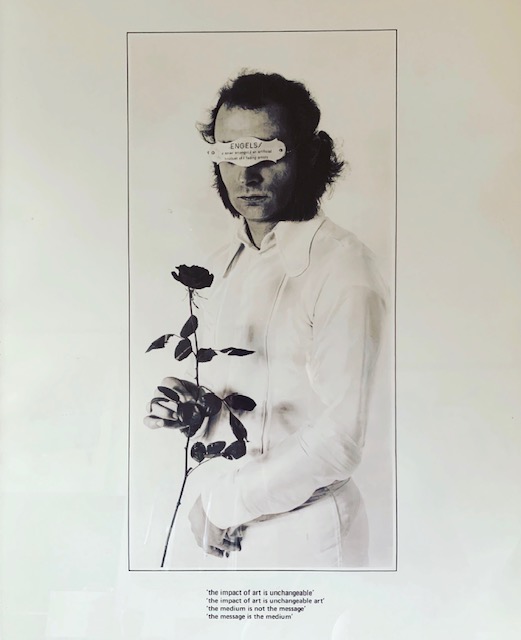
PIETER ENGELS
3 – 12 – 1938 29 – 3 – 2019
Pieter Engels was born in Rosmalen, his parents had moved there from The Hague. Engels ‘father painted religious scenes in churches and cathedrals; there was more work for him in the predominantly Catholic south.
Engels interest was exclusively sports, and that he would become an artist was not in line with expectations. It was a sportsman who led him to become an artist. A boxer, who took painting lessons from his father asked him to come along one day, handed him a sheet of paper and it was done. Pieter was immediately addicted.
Engels stops painting temporarily for lack of money and because the monochrome canvases had become a dead end for him. In 1966 he starts writing texts as a prologue to a bible, 100 from Gomorrah and eight futuristic projects. Later he would also switch to the use of language and images in his visual work.
1964 EPO
Pieter Engels was the first Dutch artist to present himself as an entrepreneur, he founded the company EPO: Engels Products Organization.
A company that made products instead of works of art. Products, made of smooth, immaculate materials, reminiscent of the luxurious ornaments and utensils of that time,
The company and its products were marketed by leaflets, flyers and posters, as was common practice in advertising.
EPO was welcomed by the Dutch art world and was also promptly a successful company
With EPO, Pieter Engels not only addressed the value as uniqueness and authenticity and the idea of art as individual expression, but also ironized the market mechanism of the art business.
Art rather than individual expression to art as a mass product. Instead of a unique work of art, with a value that cannot be expressed in monetary terms, the work of art becomes a brand article with the associated price tag.
Pieter Engels makes the economic laws the subject of his art at a time when it was still taboo to call art and commerce in one sentence, to expose the flat market mechanism. Looking at it now it is clear that art has not managed to escape the unbridled power of the market and its ridiculous excesses.
Typical EPO Products are, prototypes, restored furniture, assemblages, curtain pieces, girls coat pieces (1966) letter pieces and connection plate.
A number of key works from the 1960s,: Weight of a modern art piece(1968), Clothes of the Emperor a modern art piece(1967), Golden Fiction(1968), Bad Constructed Canvas(1967, homage a Engels)
